Balkinization
an unanticipated consequence of
Jack M. Balkin
Balkinization Symposiums: A Continuing List
E-mail:
Jack Balkin:
jackbalkin at yahoo.com
Bruce Ackerman
bruce.ackerman at yale.edu
Ian Ayres
ian.ayres at yale.edu
Corey Brettschneider
corey_brettschneider at brown.edu
Mary Dudziak
mary.l.dudziak at emory.edu
Joey Fishkin
joey.fishkin at gmail.com
Heather Gerken heather.gerken at yale.edu
Abbe Gluck abbe.gluck at yale.edu
Mark Graber
mgraber at law.umaryland.edu
Stephen Griffin
sgriffin at tulane.edu
Jonathan Hafetz
jonathan.hafetz at shu.edu
Jeremy Kessler
jkessler at law.columbia.edu
Andrew Koppelman
akoppelman at law.northwestern.edu
Marty Lederman
msl46 at law.georgetown.edu
Sanford Levinson
slevinson at law.utexas.edu
David Luban
david.luban at gmail.com
Gerard Magliocca
gmaglioc at iupui.edu
Jason Mazzone
mazzonej at illinois.edu
Linda McClain
lmcclain at bu.edu
John Mikhail
mikhail at law.georgetown.edu
Frank Pasquale
pasquale.frank at gmail.com
Nate Persily
npersily at gmail.com
Michael Stokes Paulsen
michaelstokespaulsen at gmail.com
Deborah Pearlstein
dpearlst at yu.edu
Rick Pildes
rick.pildes at nyu.edu
David Pozen
dpozen at law.columbia.edu
Richard Primus
raprimus at umich.edu
K. Sabeel Rahmansabeel.rahman at brooklaw.edu
Alice Ristroph
alice.ristroph at shu.edu
Neil Siegel
siegel at law.duke.edu
David Super
david.super at law.georgetown.edu
Brian Tamanaha
btamanaha at wulaw.wustl.edu
Nelson Tebbe
nelson.tebbe at brooklaw.edu
Mark Tushnet
mtushnet at law.harvard.edu
Adam Winkler
winkler at ucla.edu
Compendium of posts on Hobby Lobby and related cases
The Anti-Torture Memos: Balkinization Posts on Torture, Interrogation, Detention, War Powers, and OLC
The Anti-Torture Memos (arranged by topic)
Recent Posts
Could the Garland Fund Upend America Today?
Just A Few Blogs
ACS Blog
Alas, a Blog
Althouse
Arts and Letters Daily
Atrios (Eschaton)
Bill of Health
Buzzflash.com
Buzz Machine
Cato at Liberty
Juan Cole (Informed Comment)
Concurring Opinions
The Constitution in 2020
Corrente
Crooked Timber
Daily Howler
Daily Kos
Dana Boyd
Brad DeLong
Digby (Hullabaloo)
Discriminations
Daniel Drezner
Kevin Drum (Mother Jones)
Electrolite
En Banc
Eunomia (Daniel Larison)
Fafblog
Michael Froomkin (Discourse.net)
GovLab (Beth Noveck)
Rick Hasen (Election Law)
History News Network
How Appealing
Ignatz (Sam Heldman)
The Importance of (Ernie Miller)
Infolaw
Instapundit
International Economic Law and Policy Blog
IntLawGrrls
Jacob Levy
Jesus' General
Jurisdynamics
The Kitchen Cabinet
Mark Kleiman
Law Blog Central
Larry Lessig
Lawyers, Guns and Money
Liberal Oasis
Brian Leiter's Law School Reports
The Leiter Reports
Marginal Revolution
Megan McArdle
Memeorandum
Metafilter
Mirror of Justice
The New Republic
Newseum
No More Mister Nice Blog
Brendan Nyhan
Opinio Juris
Orcinus
The Originalism Blog
Pandagon
Passport (Foreign Policy)
Overcoming Bias
Political Animal (Washington Monthly)
Political Theory Daily Review
Political Wire (Taegan Goddard)
The Poor Man
Virginia Postrel
Prawfsblawg
Public Reason
Jonathan Rauch
Raw Story
Redstate
ReligiousLeftLaw.com
Reporters Committee For Freedom of the Press
Reproductive Rights Blog
Rothman's Roadmap to the Right of Publicity
SCOTUS Blog
Seeing the Forest
Clay Shirky
The Shifted Librarian
The Situationist
Larry Solum (Legal Theory)
Andrew Sullivan
Talking Points Memo
Talk Left
Tapped
Tbogg
TechPresident
The Paper Chase (Jurist)
Tom Paine
Tom Tomorrow (This Modern World)
Eve Tushnet
Uggabugga
University of Chicago Law School Faculty Blog
Unqualified Offerings
The Volokh Conspiracy
War and Piece (Laura Rozen)
Wampum
Oliver Willis
Wonkette
Written Description
Matthew Yglesias
Yin
Your Choice of Feeds
1. XML
powered by
2. Atom Feed
3. RSS 2.0
Could the Garland Fund Upend America Today?
Guest Blogger
For the Balkinization symposium on John Witt, The Radical Fund: How a Band of Visionaries and a Million Dollars Upended America (Simon and Schuster, 2025). David
Pozen
John Witt’s The Radical Fund: How a Band of Visionaries and a Million Dollars
Upended America recovers the remarkable story of the American Fund for
Public Service, known as the Garland Fund, and its efforts to advance social
democracy during the 1920s and 1930s. With his characteristic mix of erudition
and elegant prose, Witt brings to life the personal dramas, institutional
dynamics, and ideological struggles that shaped the Fund’s interventions in
many of the most pressing issues of the era. A riveting read, The Radical Fund seems likely to become that
rarest of academic birds: a 700-page monograph that finds a large and grateful
audience. Given my limited historical chops, I
will leave it to others to evaluate The
Radical Fund’s contributions to the history of philanthropy, labor
relations, civil rights, and the interwar period. My first encounter with
Witt’s project was at a conference on nonprofit law, and it is through this
lens that I will offer some reflections. As exemplified by books such as Winners Take All
and The Tyranny of Generosity, recent years have seen a boomlet in commentary that
depicts wealthy nonprofits in general, and private foundations in particular,
as enemies of democracy and engines of plutocracy. Against this backdrop,
perhaps the most striking thing about The Radical Fund is its
celebratory tone. The Garland Fund, Witt tells us, managed “to remake an
unjustifiably unfair society” (p. 4) through its righteous pursuit of economic and
racial justice. The implication, made explicit in the book’s Epilogue and in
Witt’s recent New York Times essay on “How to Save the American Experiment,” is that a Garland Fund of today might do the same. All
that’s needed is a similar level of creativity and courage. I am not so sure. Contemporary
foundations might take inspiration from the Garland Fund in a generic sense, striving
to emulate the Fund’s intrepid spirit while otherwise forging their own path. But
nonprofit law has evolved since the 1930s in ways that would make it hard to
replicate the Garland Fund’s most innovative tactics and important
breakthroughs. Consider some examples. Grantmaking to Labor Organizations “Of the nearly $2 million the Fund
gave away in its two decades of operation,” Witt relates, “over half went to
labor movement efforts” (p. 536), including pro-union publications and labor
unions themselves. The modern Internal Revenue Code strongly disincentivizes
such a grantmaking focus. Since 1969, private foundations have been required to
distribute a certain percentage (now 5%) of their assets each year for
charitable purposes, or else incur a penalty. Grants made to § 501(c)(3) public
charities count automatically toward this 5% payout requirement. Grants made to
most other types of nonprofits, by contrast, only count toward the 5% floor if
the foundation goes through the costly and cumbersome process of exercising
“expenditure responsibility,” which must be documented to the IRS. Labor unions
are not 501(c)(3) organizations (though some “alt-labor” groups are). Neither
are publications that lack a religious or educational character. Add this up, and we find that a twenty-first
century Garland Fund—let’s call it Garland 2.0—would likely take a significant financial
hit from prioritizing labor movement efforts to such an extent. Contemporary nonprofit
law steers foundation dollars away from unions.[1] Pursuing Social Change Through the
Courts The Garland Fund also gave money to
organizations pursuing social change through the courts. Most notably, it supported
lawyers at the NAACP, including Thurgood Marshall, in a litigation campaign against
Jim Crow that would eventually culminate in Brown v. Board of Education.
The tax code still smiles upon impact litigation by “charitable” nonprofits
like the NAACP Legal Defense Fund. (The NAACP is now a less favored 501(c)(4).)
What’s less clear is whether the lawsuits brought by these nonprofits can still
have comparable impact. The court victories that the Garland
Fund bankrolled were made possible, in part, by Jim Crow itself and the explicit
system of racial apartheid that it established. By the turn of the twenty-first
century, most of the leading justice struggles for marginalized groups had
shifted from “first-generation” demands for formal equality to second- and
third-generation demands for economic and political power. And these latter
demands—for positive rights to state support instead of negative rights against
state abuse—are seldom vindicated without mass popular mobilization, electoral victories, and
transformative statutes. Generally speaking, judicial decisions cannot address the
most salient forms of inequality today to the same degree that they could in
the 1920s and 1930s. But in that case, why couldn’t
Garland 2.0 simply abandon litigation and shift all its resources to the electoral
and legislative arenas? Tax law comes back into the picture here. Since the
mid-twentieth century, politicking and lobbying by private foundations and
public charities have been strictly limited by the tax code. What
public charities may do to their heart’s content, the IRS clarified in a
series of revenue rulings in the 1970s, is litigate. The
501(c)(3) rules, I have argued, thus “fit
snugly into the postwar theory of legal liberalism, in which the federal courts
were seen as the key agents of social reform and professionally managed
nonprofits as their partners in that effort.”
To the extent this vision still has descriptive purchase, it has been
thoroughly coopted by right-wing outfits such as the Institute for Justice,
Pacific Legal Foundation, and Students for Fair Admissions with goals anathema
to the Garland Fund’s. In short, in the years following the
Garland Fund’s litigation successes, the tax code began to encourage a
court-centric approach to pursuing social change—just as this approach was
losing promise for progressive activists in the Garland mode. Eschewing Perpetual Life The Garland Fund closed up shop within
two decades of its launch. From the vantage point of today, this might be the
most “radical” thing it ever did. There are a small (though reportedly rising)
number of contemporary foundations that commit to spending down their assets
within a certain timeframe; Witt’s New York Times essay cites the
example of the Gates Foundation, which Bill Gates recently announced will shutter
in 2045, forty-five years after he started it. But as reflected by the
shockwaves this announcement caused, the Gates Foundation is the exception that
proves the rule of perpetual life. Nonprofit law doesn’t penalize spend-down
strategies in the same way that it penalizes funding unions, lobbying
legislatures, or endorsing candidates for public office. But it does cast such
strategies in a suspicious light. At the federal level, the annual payout requirement
was initially set by Congress at 6% and later lowered to 5% for fear that
anything more would jeopardize foundations’ ability to exist in perpetuity. At
the state level, the widely adopted Uniform Prudent Management of Institutional
Funds Act provides in an optional subsection that spending more than 7% of an
endowment’s value in any year creates a rebuttable “presumption of imprudence.”
The message is clear: safeguarding charitable assets for the long, long haul
is the norm. Giving it all away is a deviant approach that requires special
justification. None of this is to suggest that
contemporary foundations couldn’t or shouldn’t follow the Garland Fund in
limiting their lifespans—Richard Posner once described
the “perpetual charitable foundation” as “a completely irresponsible
institution, answerable to nobody”—just that nonprofit law and culture have
moved in the opposite direction since the 1930s. The norm of perpetuity also
helps explain why there are now
some 150,000 private foundations in the United States, with more than $1.6
trillion in assets. While Garland 2.0 might stand out for embracing an
aggressive spend-down strategy, the sheer size of the sector reduces the odds that
any given grant will stand out in terms of innovativeness or impact. * * * In sum, while it is possible to
imagine any number of intriguing versions of Garland 2.0, the legal, cultural,
and economic conditions under which progressive foundations currently operate
make it much more difficult to imagine them “upending America.” What does this counsel for those who
wish to see the country upended anew? The Radical Fund’s Epilogue pits
the view that it is hypocritical to rely on wealth to attack inequality against
the view of the Garland Fund’s directors that such “moral purity” comes at “the
unacceptable cost of unilateral disarmament in the fight to shape society” (p. 540).
Witt plainly agrees with the Garland Fund directors. It’s better for the wealthy
to join the fight. Yet if the thrust of this post is persuasive,
then it may be less illuminating to debate whether elite philanthropy is good
or bad, in abstract binary terms, and more fruitful to debate how these
activities are regulated and taxed. In other words, perhaps the creativity that
we most need now is not so much in the decisionmaking of individual donors and foundations
as in the design of nonprofit law, so as to increase the likelihood that the
sector as a whole will advance rather than impede democracy. The Radical
Fund naturally does not take up this task, but in reconstructing and redeeming
the Garland Fund’s “compelling democratic vision” (p. 541), Witt’s masterpiece
helps us to see how important the task may be. David Pozen is the Charles Keller Beekman Professor of Law at Columbia Law School [1] I am assuming
here that a contemporary version of the Garland Fund would be structured as a
private foundation. Throughout the book and in his New York Times essay,
Witt refers to the Fund as a “foundation.” Chapter 11, however, suggests that toward
the end of the 1920s, the Fund was granted tax exemption as a “civic league,”
or what would now be called a § 501(c)(4) “social welfare organization.” A grantmaking
501(c)(4) would be free from the 5% annual payout requirement and the expenditure
responsibility rules, but donations to it would not be deductible and donors
would have to give up control over the organization to avoid exposing their transferred
assets to the estate tax.
Posted
8:30 AM
by Guest Blogger [link]
Books by Balkinization Bloggers

Linda C. McClain and Aziza Ahmed, The Routledge Companion to Gender and COVID-19 (Routledge, 2024)

David Pozen, The Constitution of the War on Drugs (Oxford University Press, 2024)

Jack M. Balkin, Memory and Authority: The Uses of History in Constitutional Interpretation (Yale University Press, 2024)
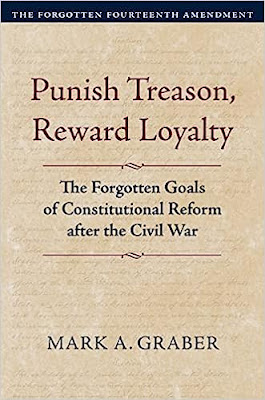
Mark A. Graber, Punish Treason, Reward Loyalty: The Forgotten Goals of Constitutional Reform after the Civil War (University of Kansas Press, 2023)
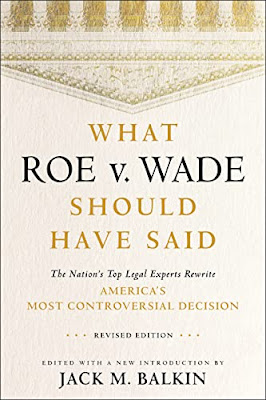
Jack M. Balkin, What Roe v. Wade Should Have Said: The Nation's Top Legal Experts Rewrite America's Most Controversial Decision - Revised Edition (NYU Press, 2023)

Andrew Koppelman, Burning Down the House: How Libertarian Philosophy Was Corrupted by Delusion and Greed (St. Martin’s Press, 2022)

Gerard N. Magliocca, Washington's Heir: The Life of Justice Bushrod Washington (Oxford University Press, 2022)
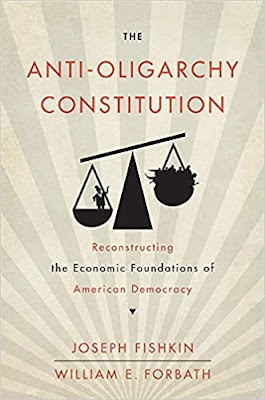
Joseph Fishkin and William E. Forbath, The Anti-Oligarchy Constitution: Reconstructing the Economic Foundations of American Democracy (Harvard University Press, 2022)
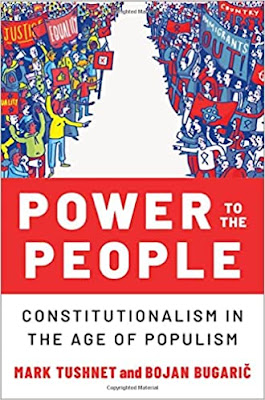
Mark Tushnet and Bojan Bugaric, Power to the People: Constitutionalism in the Age of Populism (Oxford University Press 2021).

Mark Philip Bradley and Mary L. Dudziak, eds., Making the Forever War: Marilyn B. Young on the Culture and Politics of American Militarism Culture and Politics in the Cold War and Beyond (University of Massachusetts Press, 2021).

Jack M. Balkin, What Obergefell v. Hodges Should Have Said: The Nation's Top Legal Experts Rewrite America's Same-Sex Marriage Decision (Yale University Press, 2020)

Frank Pasquale, New Laws of Robotics: Defending Human Expertise in the Age of AI (Belknap Press, 2020)

Jack M. Balkin, The Cycles of Constitutional Time (Oxford University Press, 2020)

Mark Tushnet, Taking Back the Constitution: Activist Judges and the Next Age of American Law (Yale University Press 2020).

Andrew Koppelman, Gay Rights vs. Religious Liberty?: The Unnecessary Conflict (Oxford University Press, 2020)

Ezekiel J Emanuel and Abbe R. Gluck, The Trillion Dollar Revolution: How the Affordable Care Act Transformed Politics, Law, and Health Care in America (PublicAffairs, 2020)

Linda C. McClain, Who's the Bigot?: Learning from Conflicts over Marriage and Civil Rights Law (Oxford University Press, 2020)
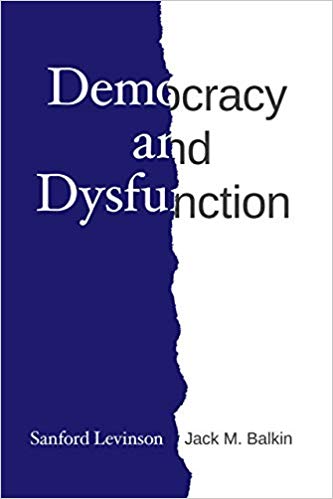
Sanford Levinson and Jack M. Balkin, Democracy and Dysfunction (University of Chicago Press, 2019)

Sanford Levinson, Written in Stone: Public Monuments in Changing Societies (Duke University Press 2018)

Mark A. Graber, Sanford Levinson, and Mark Tushnet, eds., Constitutional Democracy in Crisis? (Oxford University Press 2018)

Gerard Magliocca, The Heart of the Constitution: How the Bill of Rights became the Bill of Rights (Oxford University Press, 2018)

Cynthia Levinson and Sanford Levinson, Fault Lines in the Constitution: The Framers, Their Fights, and the Flaws that Affect Us Today (Peachtree Publishers, 2017)

Brian Z. Tamanaha, A Realistic Theory of Law (Cambridge University Press 2017)

Sanford Levinson, Nullification and Secession in Modern Constitutional Thought (University Press of Kansas 2016)

Sanford Levinson, An Argument Open to All: Reading The Federalist in the 21st Century (Yale University Press 2015)

Stephen M. Griffin, Broken Trust: Dysfunctional Government and Constitutional Reform (University Press of Kansas, 2015)

Frank Pasquale, The Black Box Society: The Secret Algorithms That Control Money and Information (Harvard University Press, 2015)

Bruce Ackerman, We the People, Volume 3: The Civil Rights Revolution (Harvard University Press, 2014)
Balkinization Symposium on We the People, Volume 3: The Civil Rights Revolution

Joseph Fishkin, Bottlenecks: A New Theory of Equal Opportunity (Oxford University Press, 2014)

Mark A. Graber, A New Introduction to American Constitutionalism (Oxford University Press, 2013)

John Mikhail, Elements of Moral Cognition: Rawls' Linguistic Analogy and the Cognitive Science of Moral and Legal Judgment (Cambridge University Press, 2013)

Gerard N. Magliocca, American Founding Son: John Bingham and the Invention of the Fourteenth Amendment (New York University Press, 2013)

Stephen M. Griffin, Long Wars and the Constitution (Harvard University Press, 2013)

Andrew Koppelman, The Tough Luck Constitution and the Assault on Health Care Reform (Oxford University Press, 2013)

James E. Fleming and Linda C. McClain, Ordered Liberty: Rights, Responsibilities, and Virtues (Harvard University Press, 2013)
Balkinization Symposium on Ordered Liberty: Rights, Responsibilities, and Virtues

Andrew Koppelman, Defending American Religious Neutrality (Harvard University Press, 2013)

Brian Z. Tamanaha, Failing Law Schools (University of Chicago Press, 2012)

Sanford Levinson, Framed: America's 51 Constitutions and the Crisis of Governance (Oxford University Press, 2012)

Linda C. McClain and Joanna L. Grossman, Gender Equality: Dimensions of Women's Equal Citizenship (Cambridge University Press, 2012)

Mary Dudziak, War Time: An Idea, Its History, Its Consequences (Oxford University Press, 2012)

Jack M. Balkin, Living Originalism (Harvard University Press, 2011)

Jason Mazzone, Copyfraud and Other Abuses of Intellectual Property Law (Stanford University Press, 2011)

Richard W. Garnett and Andrew Koppelman, First Amendment Stories, (Foundation Press 2011)

Jack M. Balkin, Constitutional Redemption: Political Faith in an Unjust World (Harvard University Press, 2011)

Gerard Magliocca, The Tragedy of William Jennings Bryan: Constitutional Law and the Politics of Backlash (Yale University Press, 2011)

Bernard Harcourt, The Illusion of Free Markets: Punishment and the Myth of Natural Order (Harvard University Press, 2010)

Bruce Ackerman, The Decline and Fall of the American Republic (Harvard University Press, 2010)
Balkinization Symposium on The Decline and Fall of the American Republic

Ian Ayres. Carrots and Sticks: Unlock the Power of Incentives to Get Things Done (Bantam Books, 2010)

Mark Tushnet, Why the Constitution Matters (Yale University Press 2010)
Ian Ayres and Barry Nalebuff: Lifecycle Investing: A New, Safe, and Audacious Way to Improve the Performance of Your Retirement Portfolio (Basic Books, 2010)
.jpg)
Jack M. Balkin, The Laws of Change: I Ching and the Philosophy of Life (2d Edition, Sybil Creek Press 2009)

Brian Z. Tamanaha, Beyond the Formalist-Realist Divide: The Role of Politics in Judging (Princeton University Press 2009)
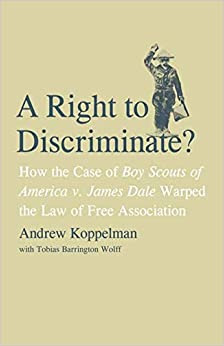
Andrew Koppelman and Tobias Barrington Wolff, A Right to Discriminate?: How the Case of Boy Scouts of America v. James Dale Warped the Law of Free Association (Yale University Press 2009)

Jack M. Balkin and Reva B. Siegel, The Constitution in 2020 (Oxford University Press 2009)
Heather K. Gerken, The Democracy Index: Why Our Election System Is Failing and How to Fix It (Princeton University Press 2009)

Mary Dudziak, Exporting American Dreams: Thurgood Marshall's African Journey (Oxford University Press 2008)

David Luban, Legal Ethics and Human Dignity (Cambridge Univ. Press 2007)

Ian Ayres, Super Crunchers: Why Thinking-By-Numbers is the New Way to be Smart (Bantam 2007)

Jack M. Balkin, James Grimmelmann, Eddan Katz, Nimrod Kozlovski, Shlomit Wagman and Tal Zarsky, eds., Cybercrime: Digital Cops in a Networked Environment (N.Y.U. Press 2007)
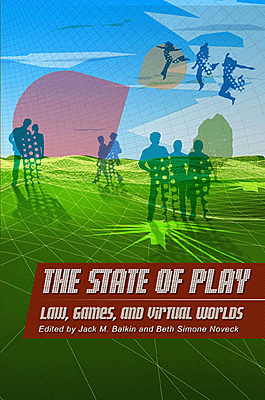
Jack M. Balkin and Beth Simone Noveck, The State of Play: Law, Games, and Virtual Worlds (N.Y.U. Press 2006)

Andrew Koppelman, Same Sex, Different States: When Same-Sex Marriages Cross State Lines (Yale University Press 2006)
Brian Tamanaha, Law as a Means to an End (Cambridge University Press 2006)
Sanford Levinson, Our Undemocratic Constitution (Oxford University Press 2006)
Mark Graber, Dred Scott and the Problem of Constitutional Evil (Cambridge University Press 2006)
Jack M. Balkin, ed., What Roe v. Wade Should Have Said (N.Y.U. Press 2005)
Sanford Levinson, ed., Torture: A Collection (Oxford University Press 2004)
Balkin.com homepage
Bibliography
Conlaw.net
Cultural Software
Writings
Opeds
The Information Society Project
BrownvBoard.com
Useful Links
Syllabi and Exams